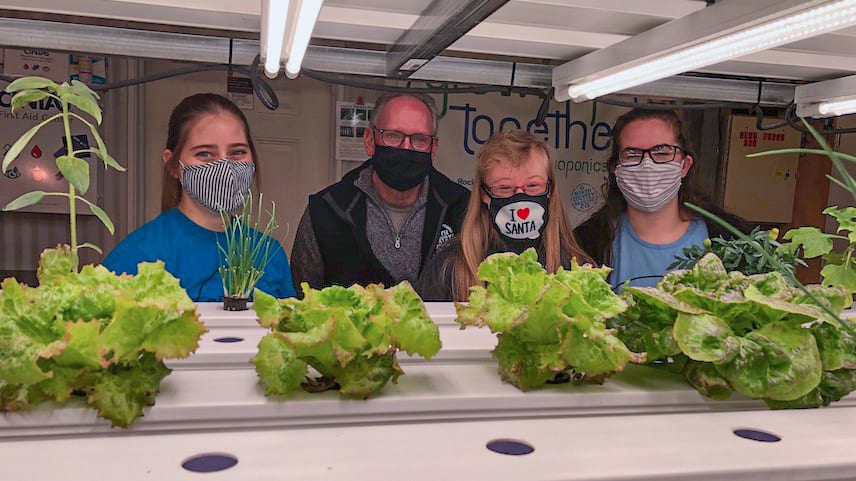
Gardening Green with Doug
Slippery Rock Aquaponics Business Hooked on Helping Students with Developmental Disabilities
By Doug Oster
December 8, 2020
Marena Toth gently lifts a huge, leafy head of lettuce to reveal a thick network of sinewy, white roots that are growing in a nutrient-rich solution fed by the fish swimming in a nearby tank.
She is proud of this impressive specimen and the team which grew the colorful leafy greens.
Toth is operations manager at Growing Together Aquaponics in Slippery Rock.
“Our main focus is taking students who are ready to transition from one point of their life into the next point, and give them the tools and skills to work on and be ready for that next step,” she says.
Her students have intellectual and other developmental disabilities and the transitions are different in every case — whether it’s moving from high school to college, aging out of the system, going from college to the workforce or some other change in their lives.
It’s important to note too, that this place is all-inclusive and works with people who don’t have disabilities as well.
There are two demonstration systems up and running at North Country Brewing Company, who have donated the space for the project. Customers who visit the taproom can enjoy much of what’s grown here on the menu and actually see the fish swimming around above the bar in a clear tank that feeds one of the systems.
“The big thing with aquaponics is that you’re creating two food sources with one input. Tilapia are often used for fish tacos at the brewery’s Tap Room,” she adds.
The other growing system uses koi as the source of nutrients.
Toth and her team are growing lettuce, mint, basil, microgreens, peppers, tomatoes and more. The tomato they’ve had the best luck with is a cherry variety called ‘House.’ LED lights glow for 12-15 hours a day and fans stimulate airflow around the plants.
The harvests have gone to North Country’s main restaurant in downtown Slippery Rock, the Harmony Inn, Tap Room and are sold at a local farmers market.
Working diligently, preparing for the day's service at the Tap Room, general manager and head chef Dale Daugherty puts down his notebook, thrilled to talk about how he uses the harvests in his recipes.
“It’s every chef’s dream,” he says of the fresh produce. "Cooking for 20 years, I couldn’t ask for anything better.”
He continues to describe the various ways he incorporates the bounty into the meals here. Meatball subs, steak sandwiches, burgers, salads and other dishes use microgreens, herbs, lettuce and other ingredients.
“It means everything,” he adds about the harvests. “It tastes better, it’s more flavorful and it lasts longer without preservatives.” He’s gently pushing the team to grow some sage microgreens, too.
An aquaponics system has similarities to hydroponics, but instead of the grower adding nutrients, those are provided by fish. In this closed system, the water from the fish tank is pumped to the plants. The plants in turn help clean the water, feeding on the fish waste and returning the water to the tank. The recirculating system uses 70 percent less water compared to traditional farming.
“It’s a very unique but smart system,” Toth says.
But there’s more than the nuts and bolts of growing which helps the people who are part of Growing Together. There’s something therapeutic about being around the system.
“It’s such a relaxing environment,” says Toth. “You hear running water, you can touch the plants. We have seen it be very successful,” she adds about the benefits of those who work and volunteer here.
The program has had a host of funders over the last two and a half years, including PNC Charitable Trust, XTO energy, Edith L Trees Charitable Trust, Mitsubishi, Slippery Rock University, Slippery Rock University Foundation and Dream Partnership.
“It’s giving a lot of opportunities,” Toth says of the people she works with. “We’re empowering these people to not only create their own food source but to understand how it’s created.”
She has also had a lot of fun watching her students teach younger kids that come in for Aquaponics Club.
“It works out really great," she remarks. "We have kids begging to make it (to club meetings) every weekend," she says with a laugh.
The people Toth work with learn at their own pace; many become mentors and can then also work here, like Nicolette (Nikki) Fenello, who has followed that path.
Like just about everyone who works here, she didn’t know much about aquaponics before arriving but is now under its spell. “My favorite subjects are math science and history, and that’s what aquaponics is,” she says confidently. “I just love how the system works.”
Fenello enjoys all aspects of the job, harvesting, caring for the fish, working at the farmers market and giving tours of the operation too. “I personally enjoy working in aquaponics learning different things every day,” she says. “I also like to problem solve.”
That means many things, like finding the cause of minor leaks, figuring out water levels and more. She walks me through the system, explaining how the nutrients from the fish are sent to a medium that feeds the plants.
When asked if she’s been able to enjoy the fruits of her labor, she smiles and says, “Tasting, is really, really cool. I get salads.”
As Fenello told her story, operations manager Kendal Kuhns was beaming, something that was obvious even wearing her mask. Working with Fenello and others in the program has been fulfilling for Kuhns in many ways.
“I saw her go from a student all the way up to a mentor, then a teacher and now a paid employee,” she says of Fenello. As the soothing sound of running water plays softly in the background, she explains why this place is unique. “It’s not really the fish and the plants,” she says. "It’s the people who work here. The students are what I fell in love with and everyone we could help.”
Toth has always been driven to work in the disability world, but wasn’t sure where it all started. As a student of Dr. Robert Arnhold at Slippery Rock University, she heard about this innovative program but didn’t really know what she was getting into.
“I just heard fish, poop and plants and was not sure what to expect,” she says with a laugh. “Then I found aquaponics, and that’s something I’m passionate about.”
When Arnhold retired from the university after thirty years of teaching, he was looking for another like-minded project. He had dedicated his life to teaching students how to help the disabled community. His Adaptive Physical Activity curriculum at Slippery Rock is where Toth and Kuhns discovered his new aquaponics idea.
He kicked the idea around with a colleague.
“We thought it would be a nice, interactive and hands-on way of teaching real job skills and also to teach STEM concepts to students, who don’t usually receive those kinds of concepts in the public schools — especially students with disabilities,” Arnhold says.
His brainchild aquaponic operation, where he volunteers as director, needed a space for this “1,000-square-foot monstrosity,” Arnhold says with a little chuckle.
Scouting around the town of Slippery Rock, he met with Bob McCaffrey, owner of North Country Brewing Company. It took about thirty seconds, Arnhold recalls, for philanthropist McCaffrey to offer space in the brewery’s warehouse.
“It’s just the perfect marriage of ideas and missions," Arnhold says. "McCaffrey also embraces sustainability."
The two demonstration systems have done their job, and the team is preparing for expansion.
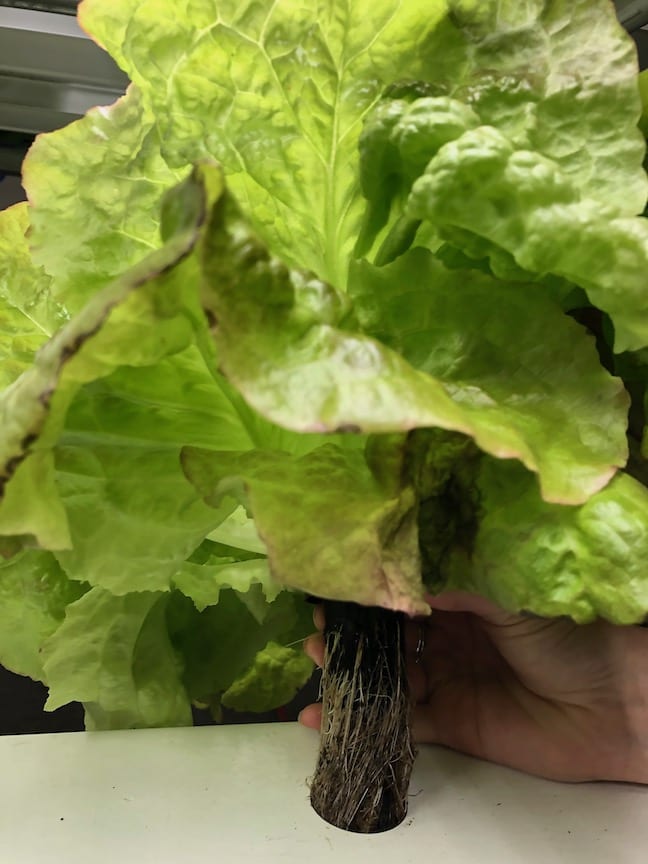
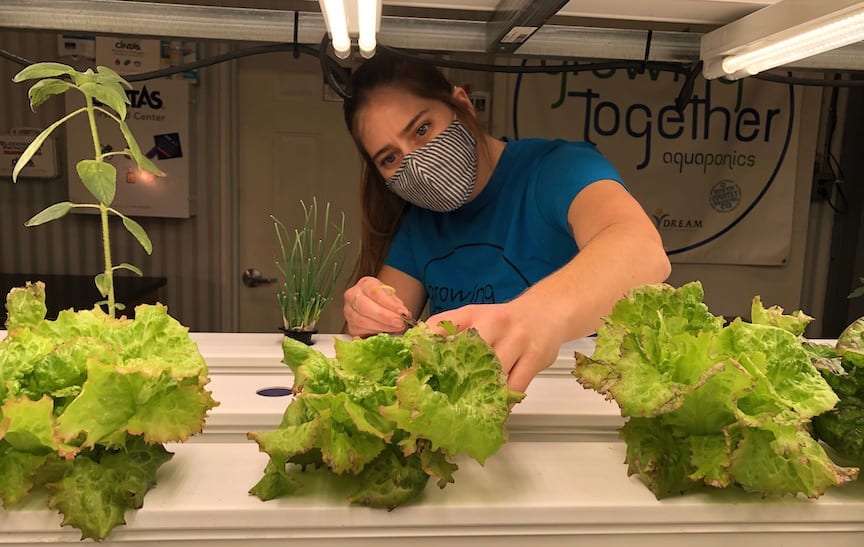
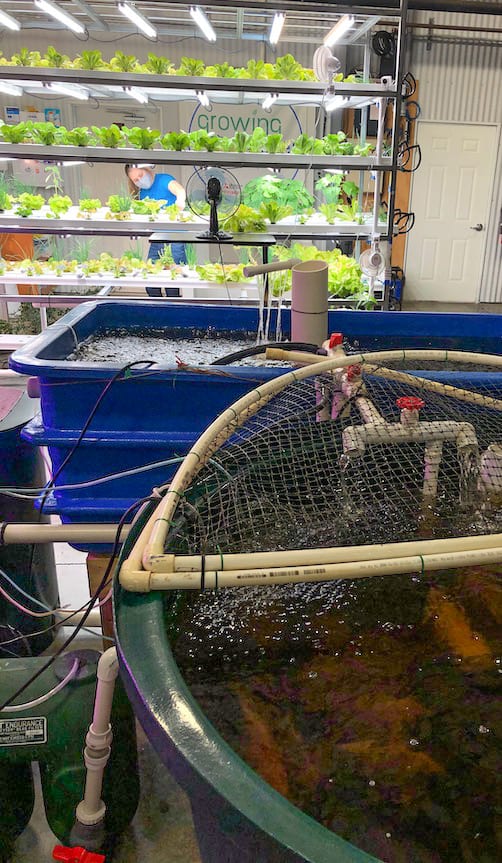
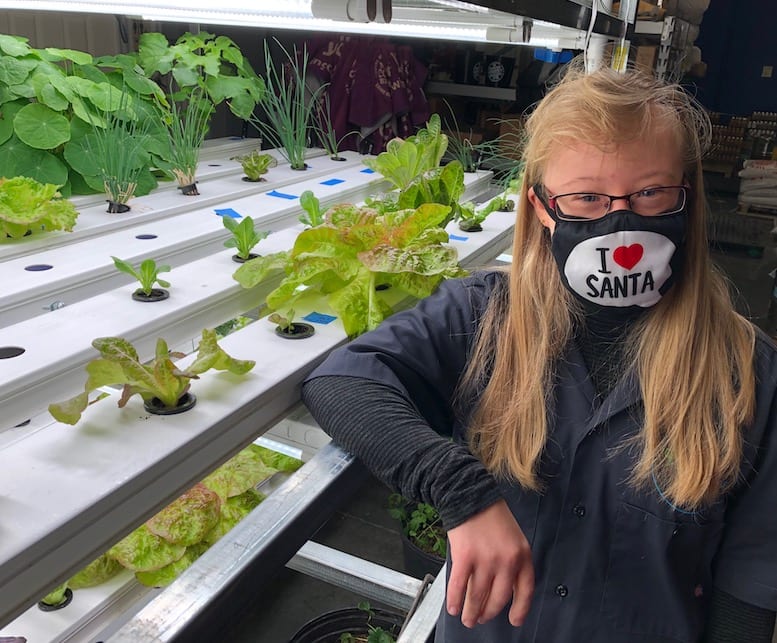
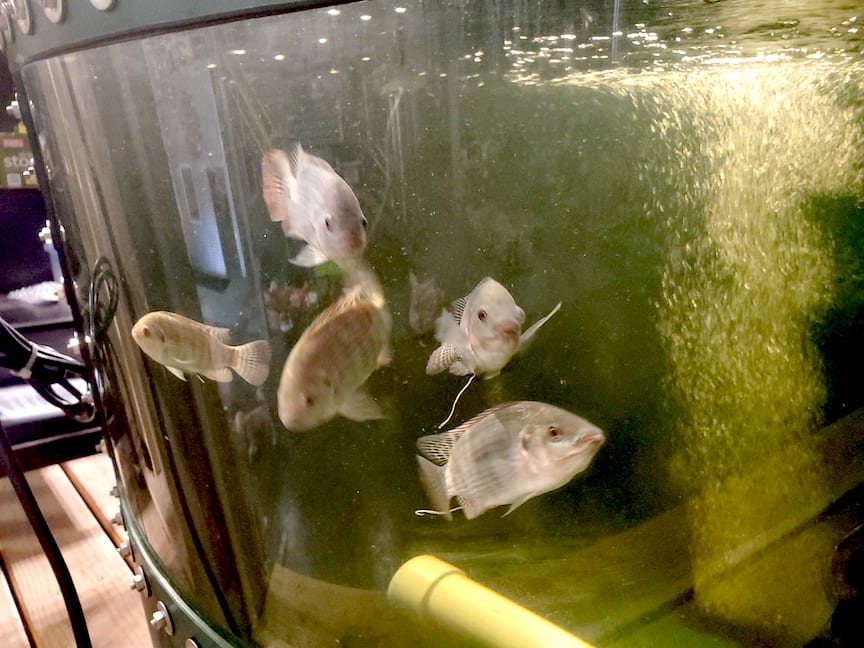
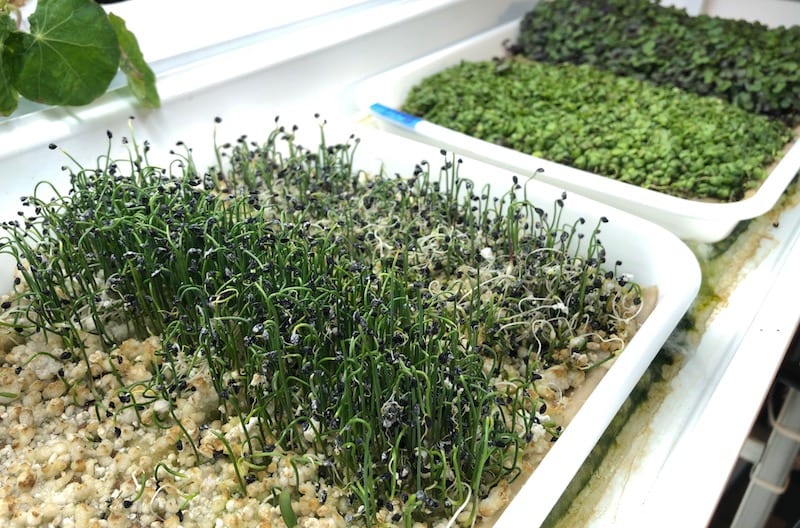
“I think the future is the most exciting part of it," Arnhold said. "We’re going to be building a greenhouse here pretty soon to make this a full production facility.”
It will be located next to the North Country Brewery’s restaurant in downtown Slippery Rock.
“Hopefully it’s going to become sustainable and employ full-time people, with and without disabilities, who can sell our crops to local restaurants, sell to the community, and teach people about healthy eating and organics.”
Arnhold has an important goal for students who come through the program.
“The bottom line is competitive, integrated employment (and) independent living in a community setting of their choice,” he says.
Toth reflects on the last couple of years of building the operation with Arnhold and the rest of the people who are involved.
“I think I cry at least once a week watching our students progress. I love watching them get to the point where they are independent. I hate it, but I love it," she says with a laugh, "that they don’t need me. I want them to be successful in the future.”
A Friendship Grows
When Marena Toth mentioned how well the ‘House’ tomato performed in the Growing Together Aquaponics operation, I wasn’t sure if I heard her right.
“We’ve been very successful with that one,” she said proudly.
Toth continued to explain that a Butler County Penn State Master Gardener had volunteered to work with the program and brought her some seeds.
“It’s not Monica is it?" I asked, which brought a short pause.
“It is Monica, Toth," said with a shocked voice. “How do you know Monica?”
This discovery came after we already realized there were a couple of interesting coincidences between us. She is from Stow, Ohio, the town I lived in for 15 years before coming to Pittsburgh. We also both went to Kent State University.
I explained to Toth that I had found the ‘House’ tomato seven or eight years ago in the J.L. Hudson Seedsman catalog— one of my all-time favorite seed sources. The catalog doesn’t include pretty photos or many illustrations, but it is filled with unique seeds of trees, shrubs, herbs, flowers, vegetables and more.
Here’s what the catalog had to say about the ‘House’ tomato:
“The most unusual tomato we have grown, with small, red cherry tomatoes produced on very compact plants. Early and perfect for containers and short-season areas. Very tasty flavor. It came to us from Curtis Androsoff, who says: ‘The House tomato are heritage seed. I have two plants that are 12 years old, producing good fruit. I cut them down for new growth each year. If you leave them, some plants grow too high in the house over winter. New growth produces more fruit. First seeds came to Canada in 1893 with my grandmother from Tbilisi Russia on an old sail ship. My people settled in Saskatchewan.’ The plants are high-yielding and are grown outdoors in summer, and brought in by a sunny window in winter. Here they formed, dwarf compact plants less than a foot-tall, grown outdoors, with thick, succulent, blue-green leaves.”
Needless to say, I was intrigued and ordered some seeds in hopes of growing the plant year-round.
This is where Monica Huselton comes in.
We’ve been gardening friends for years. She would come to see me speak and then traveled with me on a couple of the international trips on which I take gardeners.
I wrote about the tomato with enthusiasm, and when we met at an event, she wanted the order information, but I told her I’d be happy to give her a couple of my plants. “I’ve been growing them ever since,” she said.
Like me, she never was able to get the plant to thrive all winter but is still harvesting from her indoor plants — now under lights —and they are blossoming, too. She has been increasingly more successful with the tomato each season.
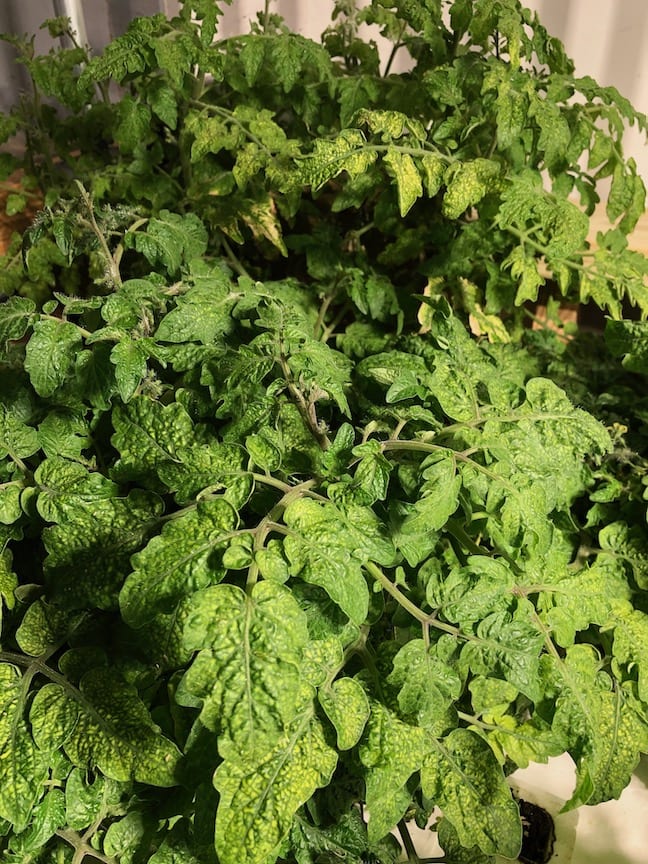
After getting to know the plant over the years, “I’ve been able to get them through most, but not all of the winter," Huselton added.
For outdoor, summer growing it’s the earliest producer in her garden. The plant stays small, reaching just under two feet tall.
“It’s a balanced sweet acid,” she says of the taste. “That’s the kind of tomato I like, I’m pleased with it.” She warns not to overwater the plants, as it can make them bland.
Huselton heard Toth give a lecture about Growing Together Aquaponics and was impressed. With 30 years of hydroponic experience in her home system and a background in science, Huselton asked if she could help as a volunteer for the program and was welcomed with open arms.
After seeing how successful Growing Together has been with the tomato, Huselton has changed the way she’s growing at home, adding more organic liquid nutrients to her hydroponic system.
She’s thrilled to work with Toth and the people at Growing Together.
“I come in with the knowledge of plants," she says. "Whereas they’ve got the knowledge of these special people and this system. It’s a match made in heaven.”

[…] Growing Together Aquaponics helps students with disabilities. […]